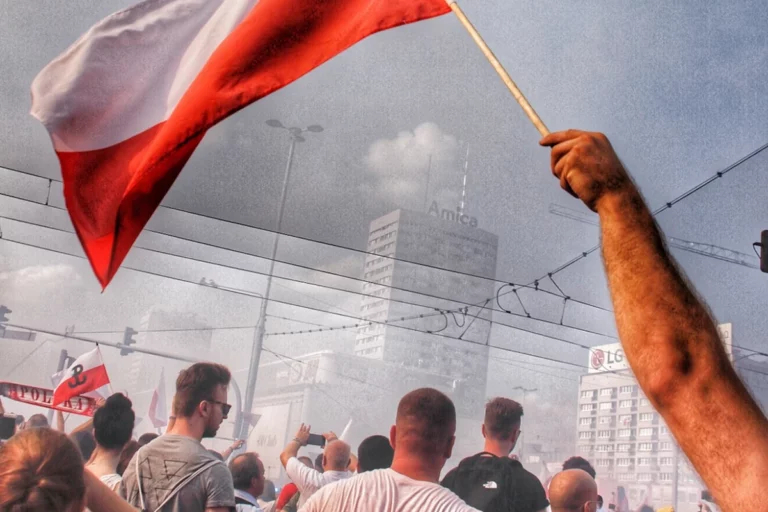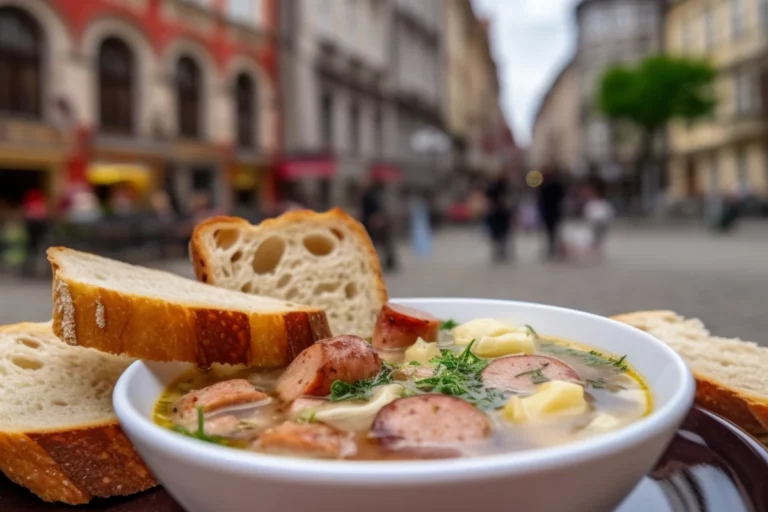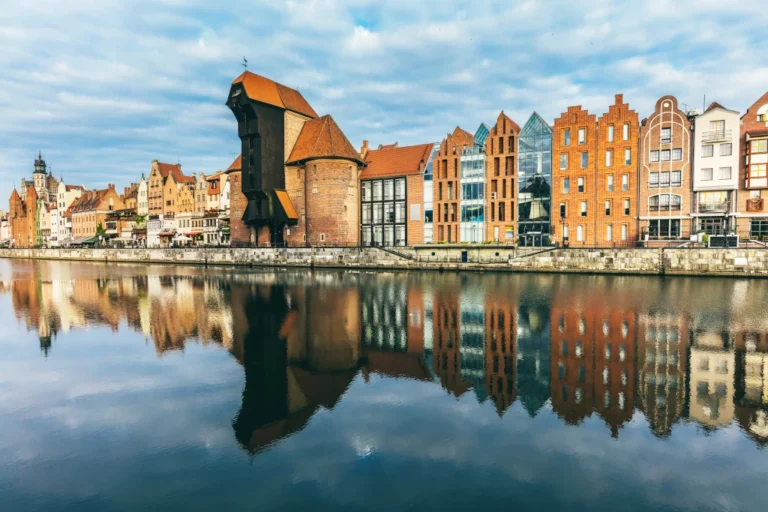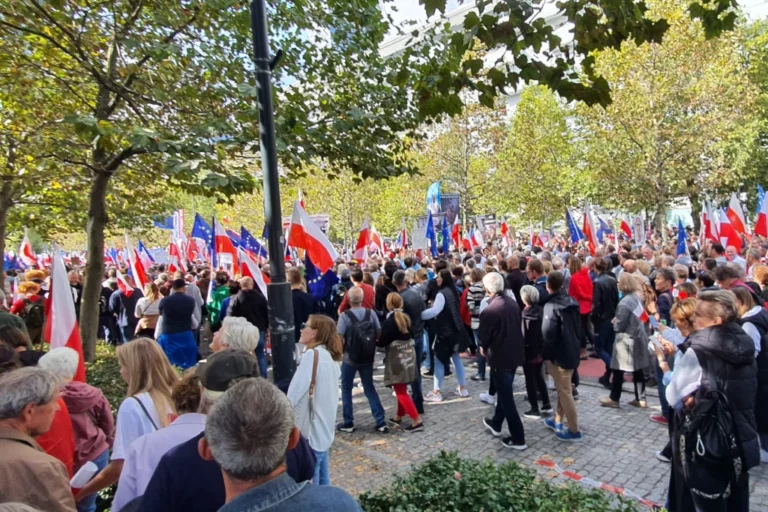Everything you need to know when you want to visit Warsaw
Introducing to Warsaw
Imagine strolling along the picturesque streets of a city that has risen like a phoenix from the ashes, a city that boasts a rich tapestry of history and modernity, co-existing in harmony. Welcome to Warsaw, the resilient and vibrant capital of Poland. As a first-time visitor, you’ll be captivated by the unique blend of architectural styles, ranging from medieval to contemporary, as well as the city’s lush green spaces, delicious cuisine, and warm-hearted people.
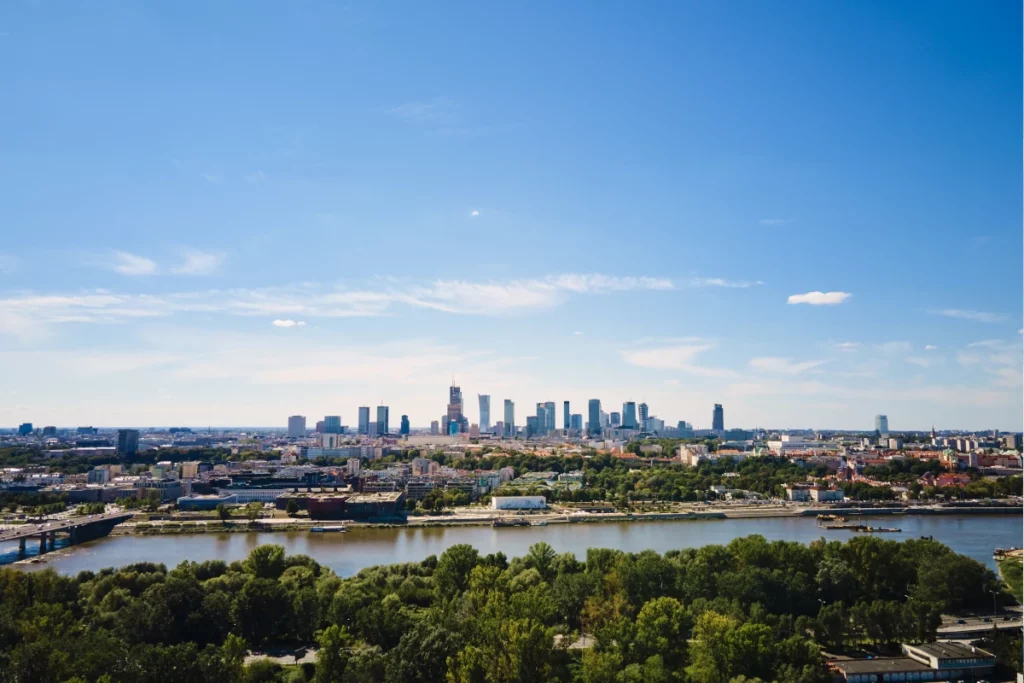
In this article, we’ll guide you through the must-see attractions, hidden gems, and fascinating tales of Warsaw – the city that has been an inspiration for generations. Pack your bags and get ready to embark on a journey filled with culture, adventure, and unforgettable memories in this enchanting Eastern European gem.
History of Warsaw
Warsaw’s history is a fascinating and complex tapestry of triumphs and tragedies, stretching back over a millennium. To help you better understand and appreciate this remarkable city, let’s take a journey through its past, broken down into key chronological sections.
Early Beginnings (13th-16th century)
Warsaw’s origins date back to the 13th century when it was a small fishing village called Warszowa. In 1413, the town officially became the capital of the Duchy of Mazovia, and in 1526, after the last Mazovian duke’s death, Warsaw was incorporated into the Kingdom of Poland. The city’s strategic location on the Vistula River and its status as a hub of trade and commerce helped it grow rapidly during this period.
Golden Age (17th-18th century)
The 17th and 18th centuries marked a golden age for Warsaw, as the city flourished under the rule of the Polish-Lithuanian Commonwealth. In 1596, King Sigismund III Vasa moved the royal court to Warsaw, making it the capital of Poland. During this time, the city became a center of art, science, and culture, with numerous palaces, churches, and public buildings constructed in the Baroque and Renaissance styles.
Partitions and Struggles (1795-1918)
Warsaw faced turbulent times during the late 18th and early 20th centuries. The city was occupied and partitioned multiple times between Prussia, Austria, and Russia, resulting in the loss of Polish sovereignty. Throughout this period, Warsaw remained a hotbed of patriotic and revolutionary sentiment, with locals fighting to regain their independence.
World War II (1939-1945)
The darkest chapter in Warsaw’s history was undoubtedly World War II. In 1939, Nazi Germany invaded Poland, and the city experienced brutal oppression under the occupation. The Warsaw Ghetto was established, imprisoning over 400,000 Jews in inhumane conditions. In 1944, the brave residents of Warsaw launched the Warsaw Uprising, a 63-day battle against the Nazis. Despite their courage, the uprising was crushed, and the city was systematically destroyed by the occupiers.
Rebirth and Modernity (1945-present)
In the aftermath of WWII, the citizens of Warsaw embarked on a remarkable mission to rebuild their city. The Old Town was meticulously reconstructed using original architectural plans, and in 1980, it was inscribed on the UNESCO World Heritage List as an outstanding example of post-war restoration. Today, Warsaw is a thriving metropolis, successfully blending its rich historical legacy with a dynamic, modern spirit, making it a captivating destination for travelers from around the world.
Post-Communist Transformation
The fall of communism in 1989 marked a turning point in Warsaw’s history, paving the way for a new era of change and progress. The city has undergone a remarkable transformation since the early 1990s, shedding the remnants of its dark past and embracing a brighter future.
Following the end of communist rule, Warsaw began a rapid process of modernization, fueled by foreign investment and the city’s drive to re-establish itself on the global stage. As the political, economic, and cultural heart of Poland, Warsaw has experienced rapid growth, with new infrastructure, skyscrapers, and state-of-the-art facilities emerging at an astonishing pace.
In addition to its physical transformation, Warsaw has become a hub for creativity and innovation. The city now boasts a thriving arts scene, with numerous galleries, theaters, and music venues showcasing both traditional and contemporary works. Warsaw’s culinary landscape has also flourished, with an array of international and fusion restaurants offering a world of flavors alongside traditional Polish cuisine.
However, Warsaw has not forgotten its rich history and heritage. Amidst the modernity, the city’s carefully preserved and reconstructed historical landmarks, such as the Royal Castle and Wilanów Palace, serve as a testament to its resilience and a source of inspiration for future generations.
Today, Warsaw stands proudly as a symbol of rebirth and reinvention, proving that even the darkest chapters of history can give rise to a vibrant, forward-looking city that is ready to welcome the world with open arms.
Geography and climate
Warsaw is located in east-central Poland, along the Vistula River. The city’s geography is characterized by a mix of flat lowlands and gentle hills, with the river serving as a central dividing line. As the largest city in Poland, Warsaw covers an area of approximately 517 square kilometers.
The climate in Warsaw is classified as humid continental, featuring four distinct seasons. Summers are generally warm and pleasant, with temperatures ranging from 20°C to 25°C (68°F to 77°F), while winters can be cold and snowy, with temperatures averaging around -2°C to 2°C (28°F to 36°F). Spring and autumn offer mild, transitional weather, with occasional rainfall. Warsaw’s climate provides a diverse range of experiences for visitors throughout the year, from lush, green summers to picturesque, snowy winters.
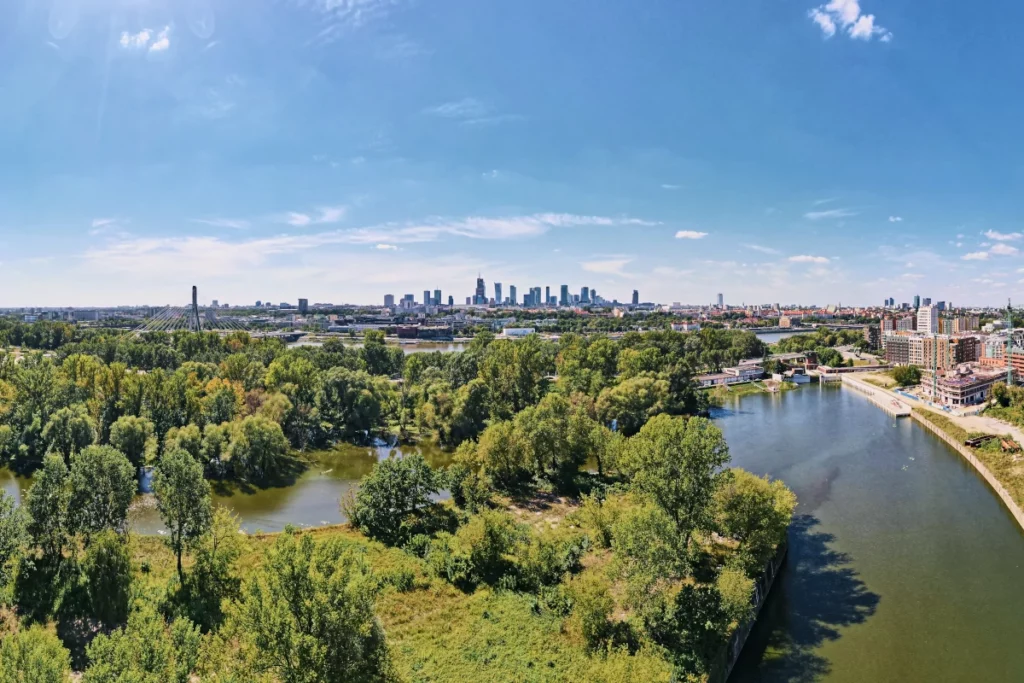
Demography and language
Warsaw is Poland’s largest city, with a population of more than 1.8 million. As the country’s capital and an important economic and cultural center, it attracts people from all over the world. In recent years, the city has experienced an increase in the number of international arrivals, contributing to its cultural diversity and dynamic character.
In Warsaw, as in other major Polish cities, an increasing percentage of residents speaking English is noticeable. As a result, for tourists and newcomers, getting along in English is usually not a problem, especially in the city center, among the younger generation and in places frequently visited by tourists, such as hotels, restaurants and tourist attractions.
Main tourist attractions
Warsaw offers many attractions that will delight both history and art lovers, as well as those seeking entertainment and relaxation. Here are some key places that every foreign tourist should visit during a stay in Poland’s capital:
Old Town
Old Town (Stare Miasto) – Warsaw’s Old Town is the heart of the city, full of charming townhouses and narrow streets. It was rebuilt after the destruction of World War II and is a UNESCO World Heritage Site. In the Old Town, visit the Castle Square with the Column of Sigismund III Vasa, St. John’s Cathedral and the Royal Castle.
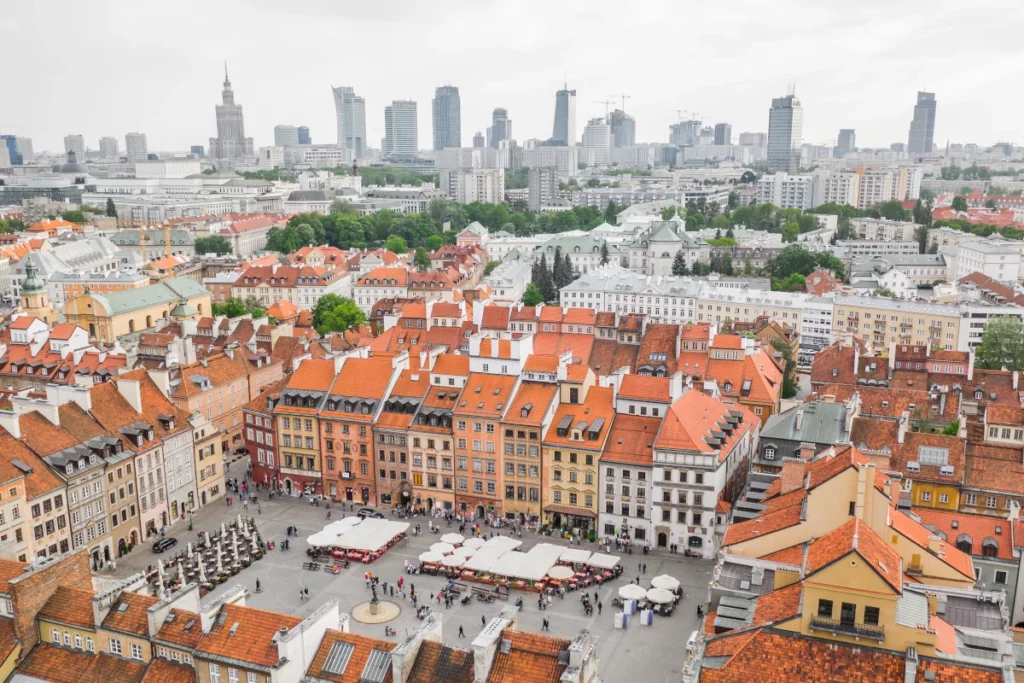
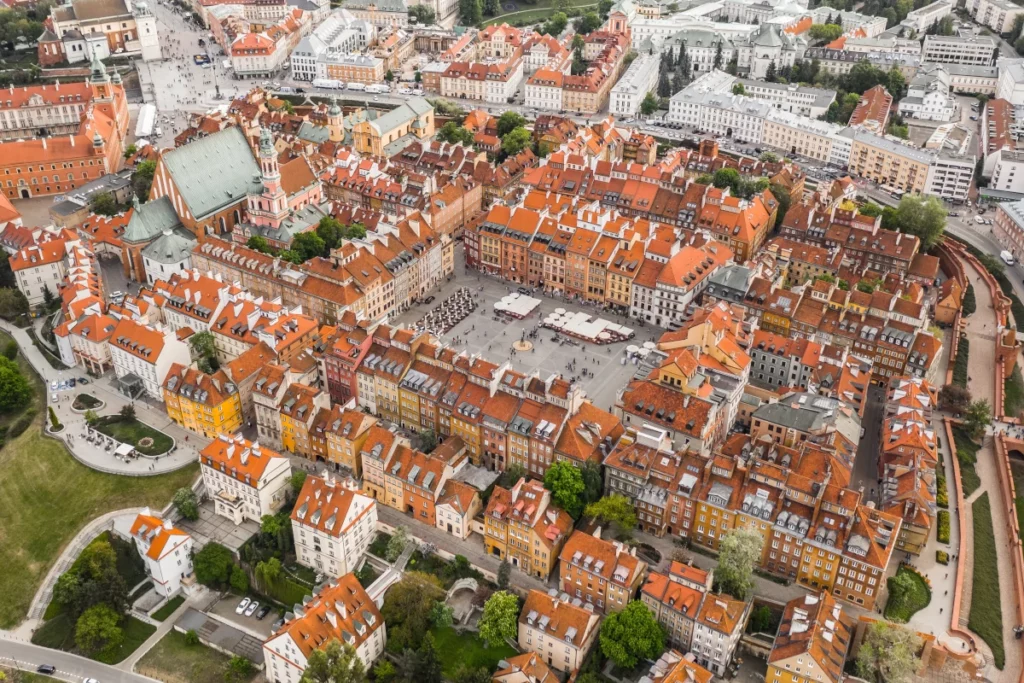
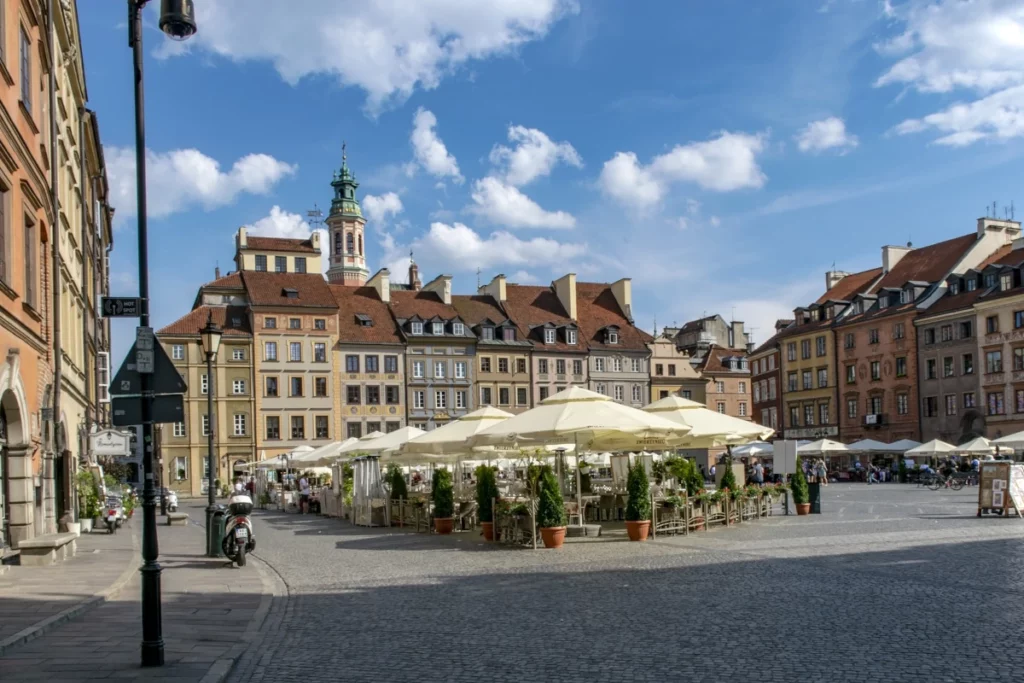
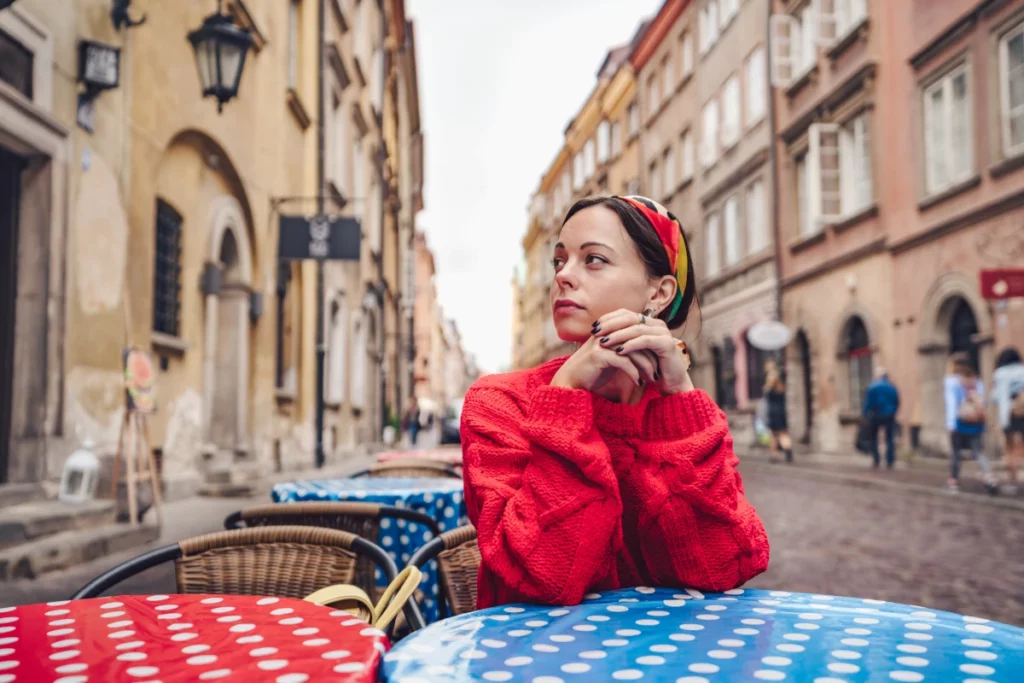
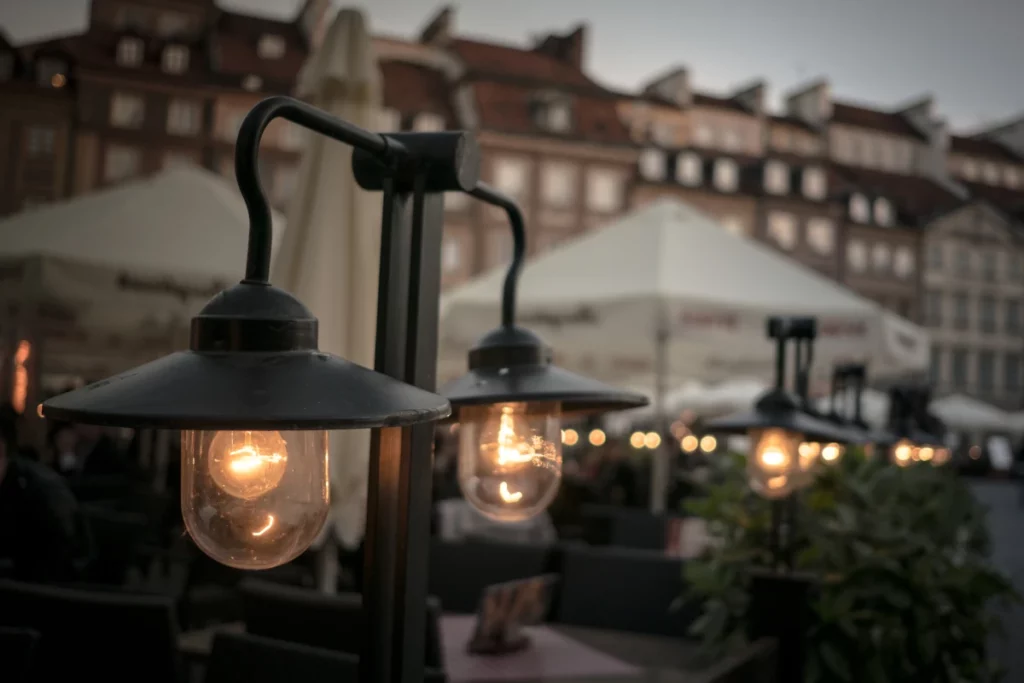
Castle Square
Castle Square (Plac Zamkowy) – This vibrant and picturesque square is located at the entrance to the Old Town, and is a perfect starting point for your exploration of Warsaw’s historical center. Surrounded by colorful Baroque-style buildings, Castle Square is a popular gathering place for both tourists and locals, often hosting various cultural events, markets, and outdoor cafes.
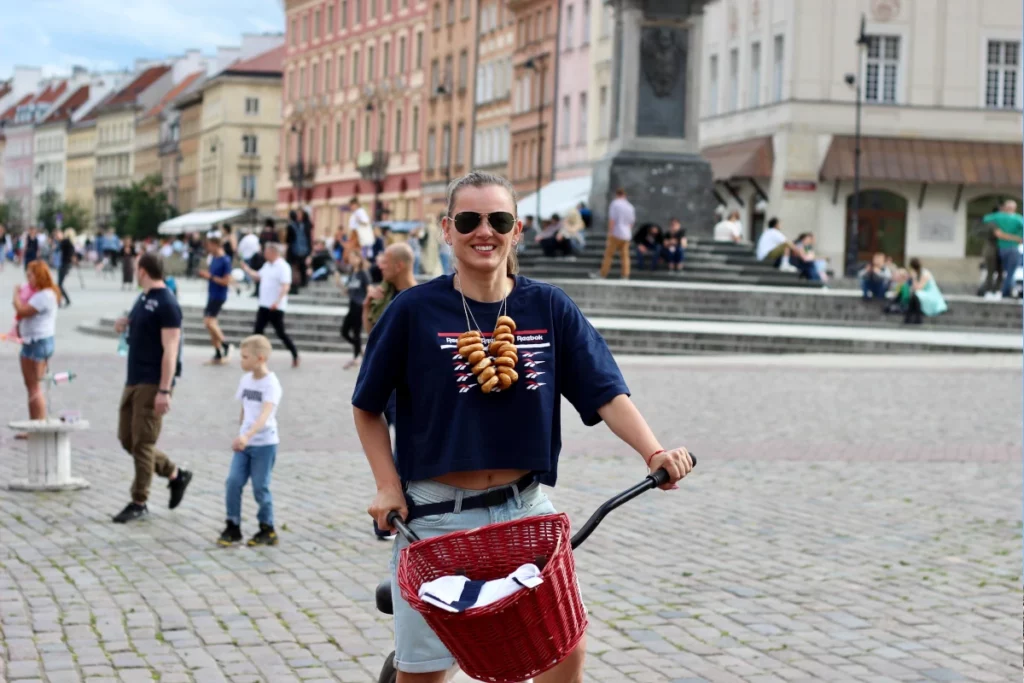
Sigismund’s Column
Sigismund’s Column (Kolumna Zygmunta) – Standing majestically in the Castle Square, Sigismund’s Column is a 17th-century monument dedicated to King Sigismund III Vasa, who moved the capital of Poland from Kraków to Warsaw. This iconic landmark is not only a symbol of the city’s rich history, but also a popular meeting point for both residents and visitors.
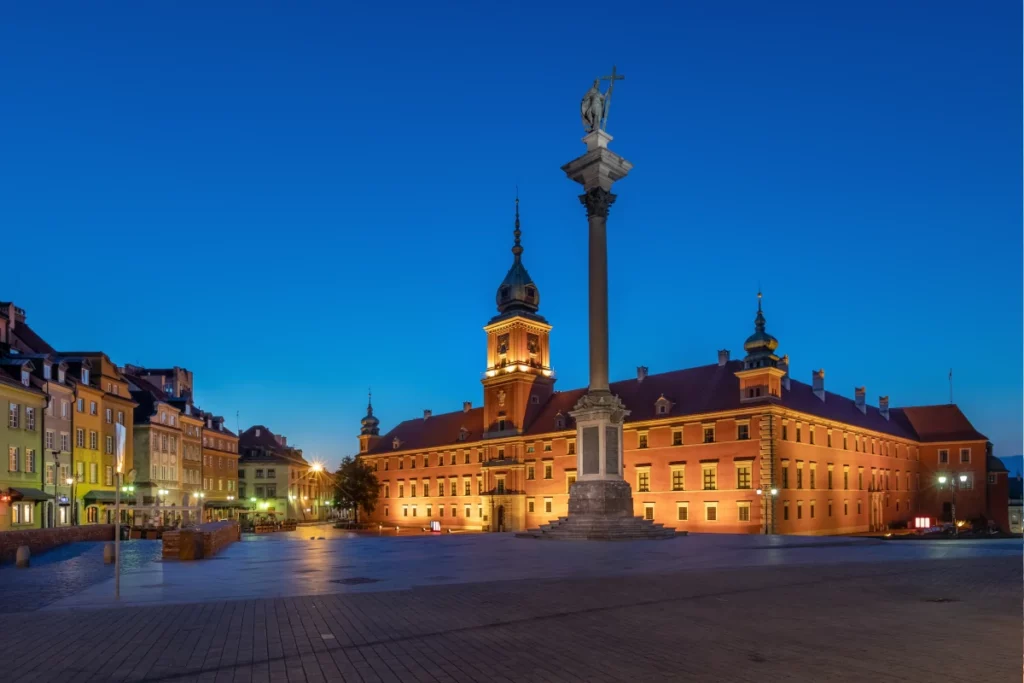
St. John’s Cathedral
St. John’s Cathedral (Katedra św. Jana) – This impressive Gothic church, located in the Old Town, is one of the most important religious sites in Warsaw. Dating back to the 14th century, St. John’s Cathedral has witnessed numerous historical events, including the coronations and burials of Polish monarchs. The cathedral’s beautiful architecture and rich history make it a must-visit attraction for anyone exploring Warsaw.
Palace of Culture and Science
Palace of Culture and Science – A symbol of Warsaw, an imposing building in the socialist realist style, which offers a variety of attractions such as museums, cinemas, theaters, as well as an observation deck on the 30th floor from which you can enjoy a panoramic view of the city.
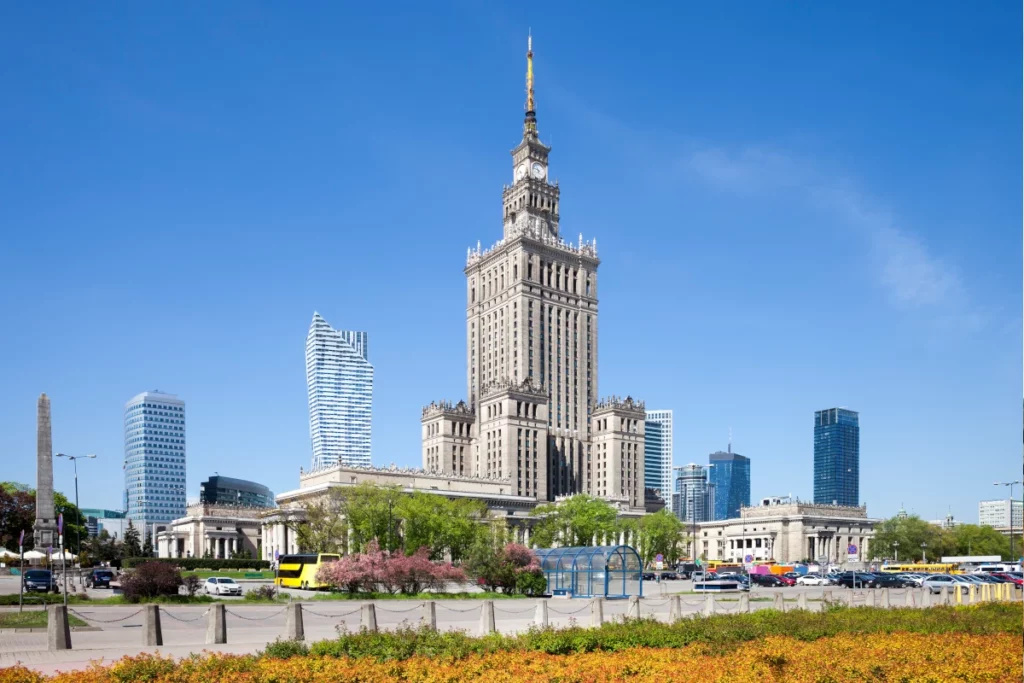
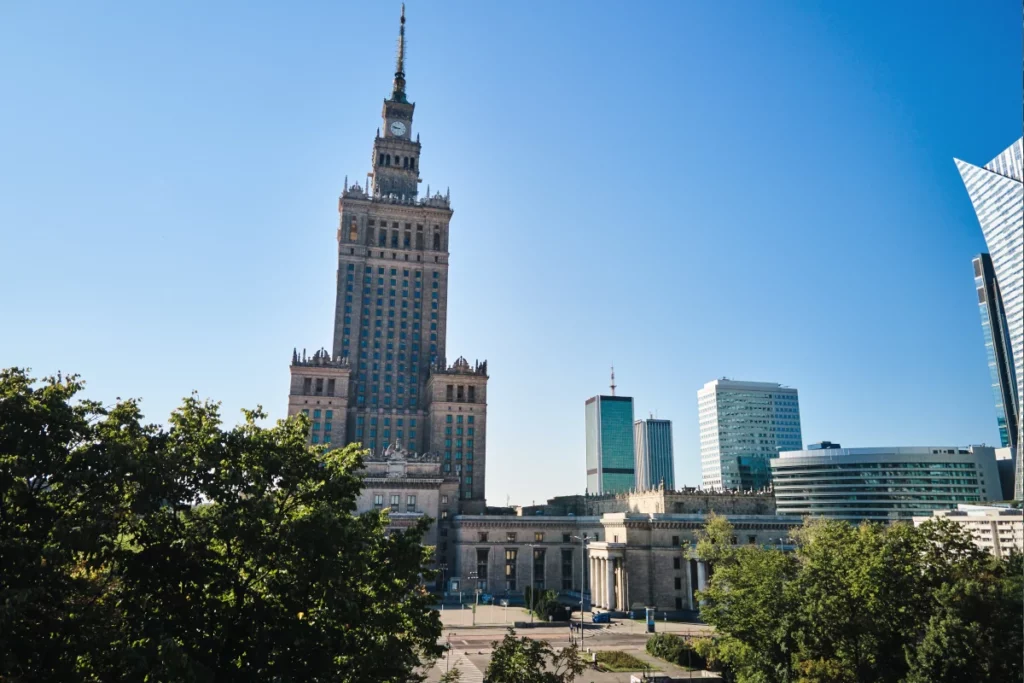
Warsaw Uprising Museum
Warsaw Uprising Museum – An important place for those who want to explore the history of Warsaw and learn about the tragic events of the 1944 Warsaw Uprising. The museum offers interactive exhibitions that take a closer look at dramatic moments in the city’s history.
Royal Castle
Wilanów – A royal residence from the 17th century, often referred to as the „Polish Versailles.” The palace, along with its beautiful garden, is the perfect place to take a stroll and relax, and learn about the history of Polish Baroque and court life.
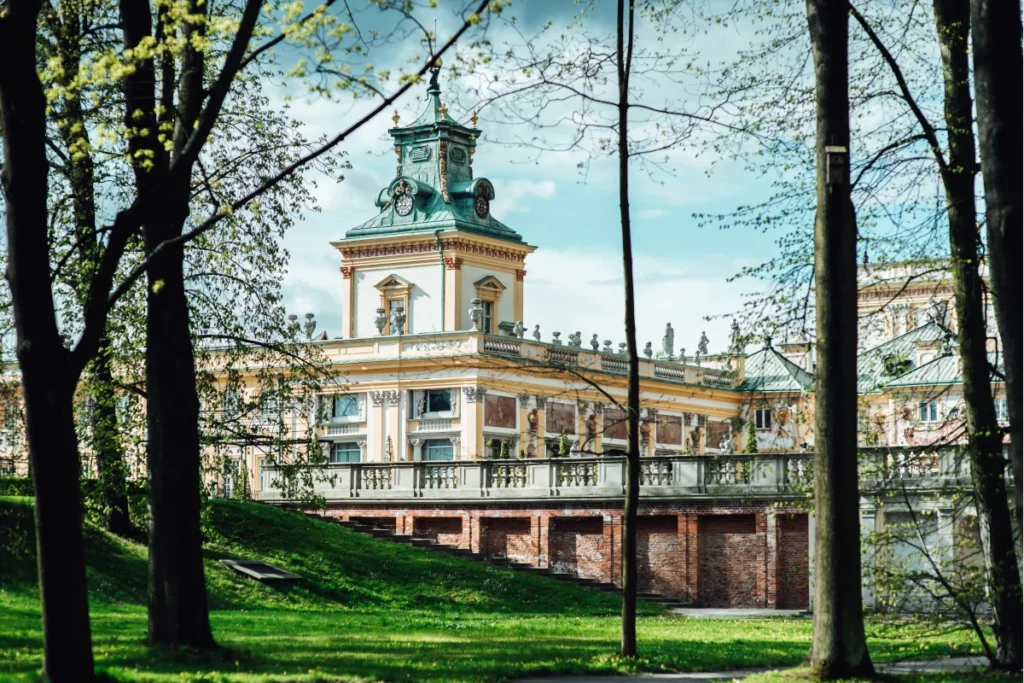
The Museum of History of Polish Jews
POLIN Museum – The Museum of the History of Polish Jews, which tells the thousand-year history of the coexistence of Jews and Poles. It’s worth a visit for both its modern architecture and interactive exhibitions.
Praga
Praga – A district located on the right bank of the Vistula River that has retained its unique character. Praga means atmospheric streets, cafes, art galleries and numerous murals that add a unique character to this part of the city. It is worth visiting the Cathedral of St. Michael the Archangel and St. Florian the Martyr, the ZOO, Soho Factory and the Targowa Creative Center to feel the atmosphere of this unusual and creative district.
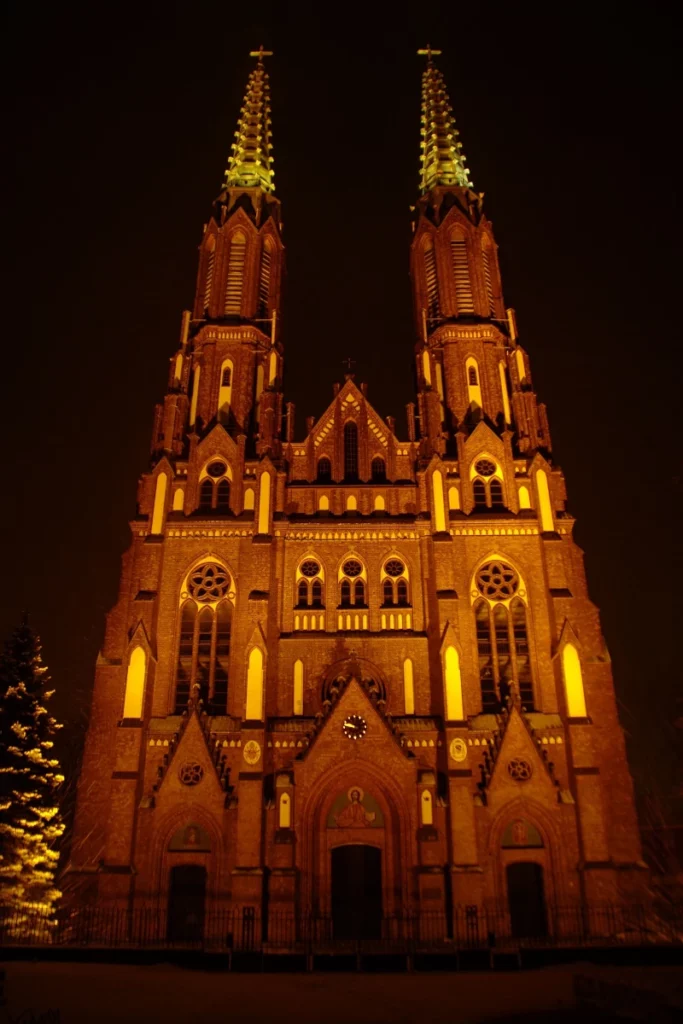
Fryderyk Chopin Museum
Fryderyk Chopin Museum – Devoted to the life and works of Poland’s most famous composer, the Fryderyk Chopin Museum is a must-see for music lovers. Housed in the Ostrogski Palace, the museum features a vast collection of personal items, manuscripts, and interactive displays that provide insights into Chopin’s life, his creative process, and the cultural context of his time. The museum also offers a range of educational and cultural programs, including concerts and workshops, allowing visitors to fully immerse themselves in the world of this musical genius.
Łazienki Park
Royal Łazienki Palace (Pałac Królewski w Łazienkach) – Also known as the Palace on the Isle, this neoclassical palace is nestled in the heart of the Royal Łazienki Park, surrounded by serene water and lush greenery. Built in the 17th century as a private bathhouse for the aristocracy, the palace was later transformed into a luxurious summer residence for King Stanisław August Poniatowski. Visitors can explore the beautifully decorated interior, filled with exquisite artwork, furniture, and royal memorabilia, as well as the idyllic park that surrounds the palace. The Royal Łazienki Palace is a testament to the splendor of Poland’s royal past and offers a peaceful retreat within the bustling city of Warsaw.Royal Baths Park – This is the largest park in Warsaw, which also serves as a museum. The Royal Baths Park is home to magnificent palaces, orangeries, monuments and numerous historic gardens. Don’t miss the Palace on the Island, the Belvedere or the Frederic Chopin monument.
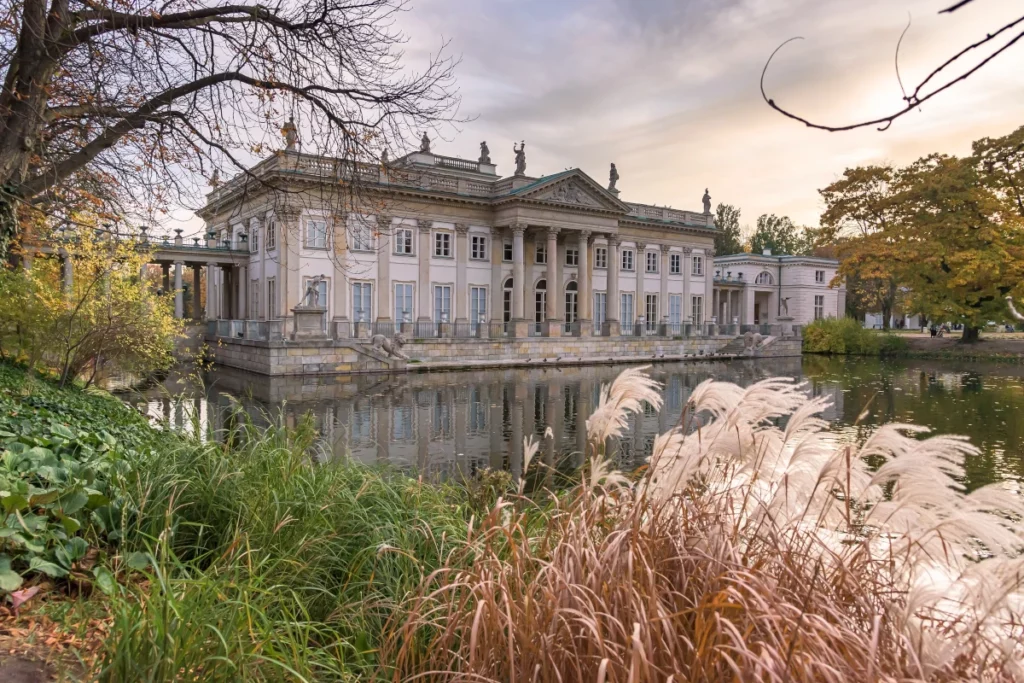
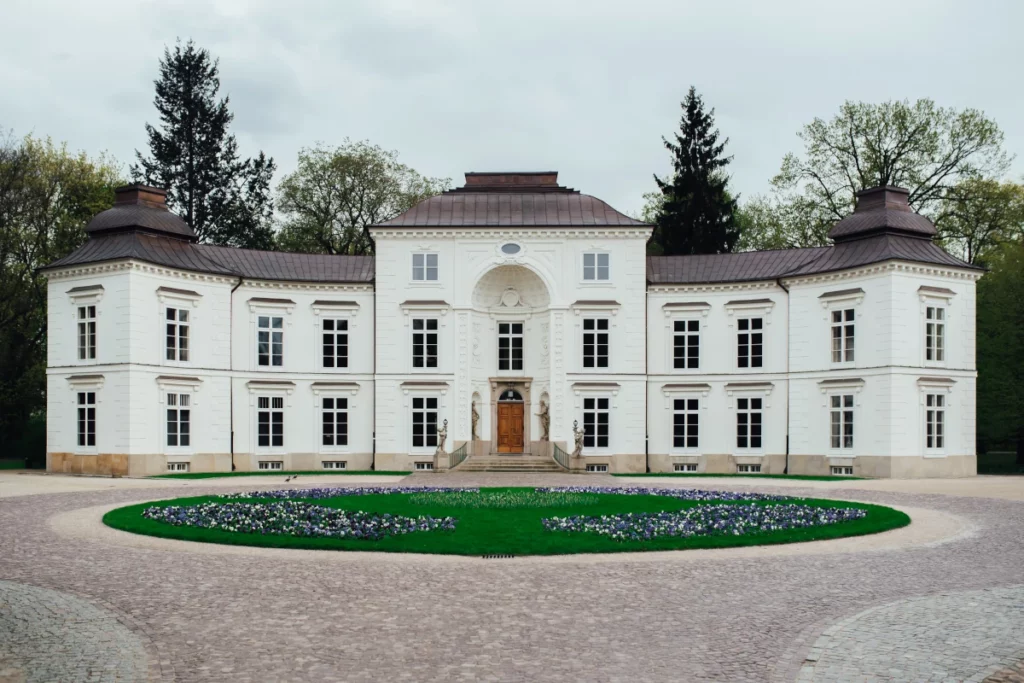

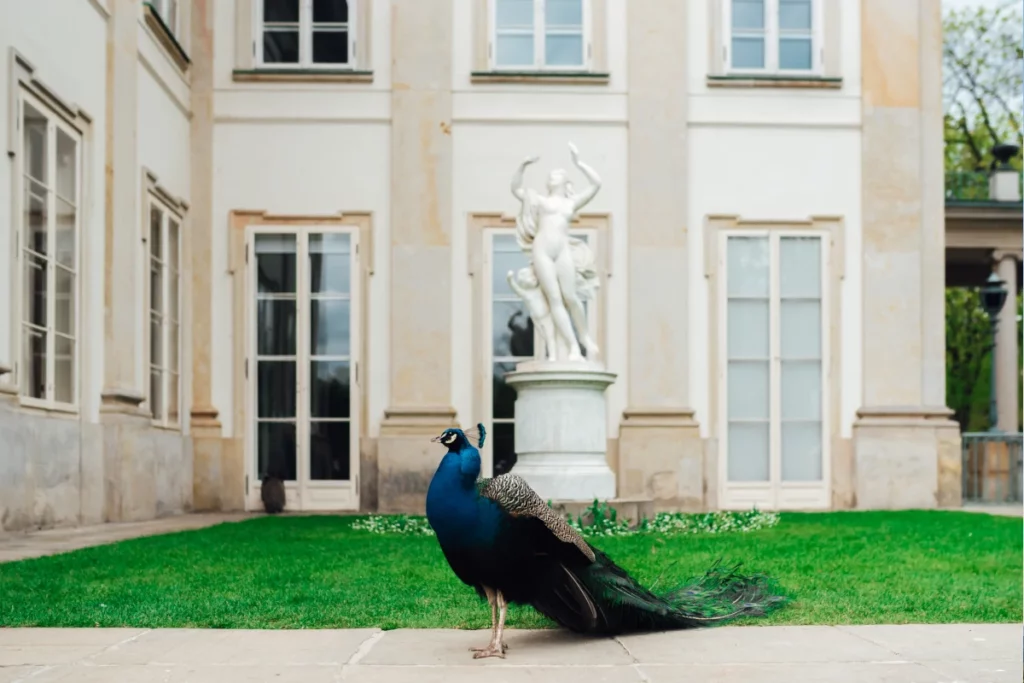
Varso Tower – the tallest building in the European Union
The 53-story, 70,000 m² Varso Tower is the tallest building in the European Union. At the top there is an observation deck and a restaurant.
Guests will reach the public observation deck at 230 meters (twice the height of the popular observation point at the Palace of Culture and Science) via panoramic elevators, straight from the dedicated reception area.
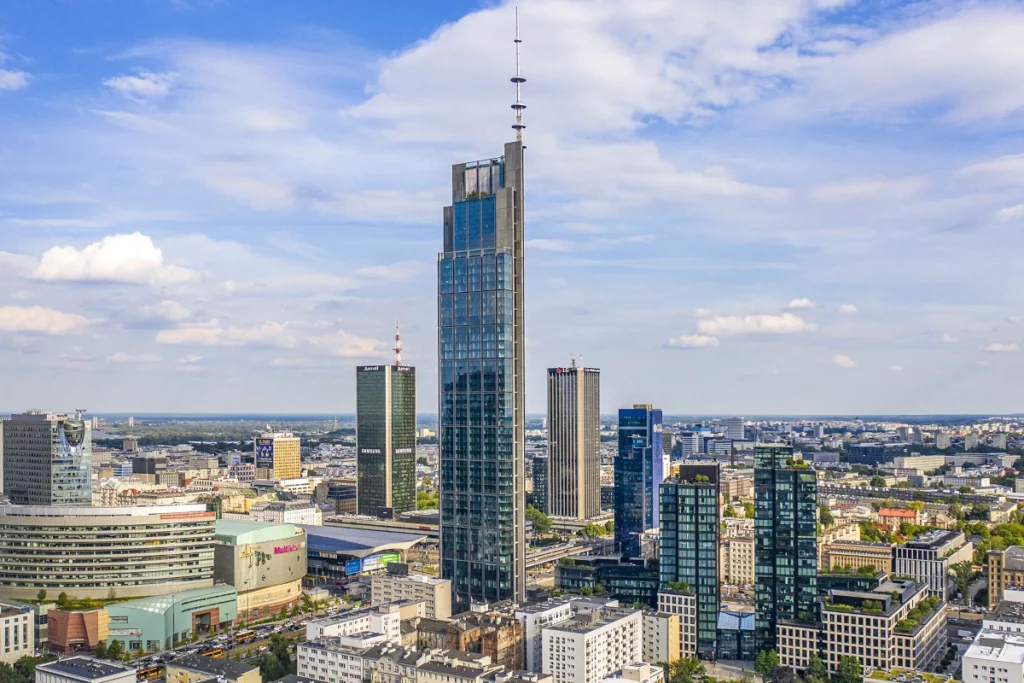

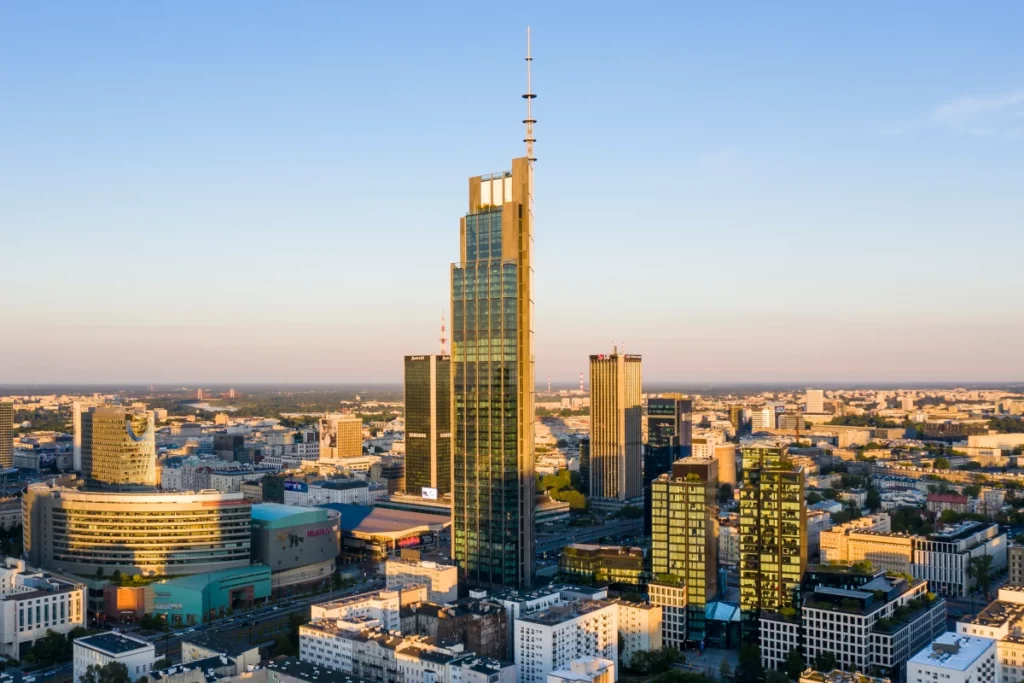
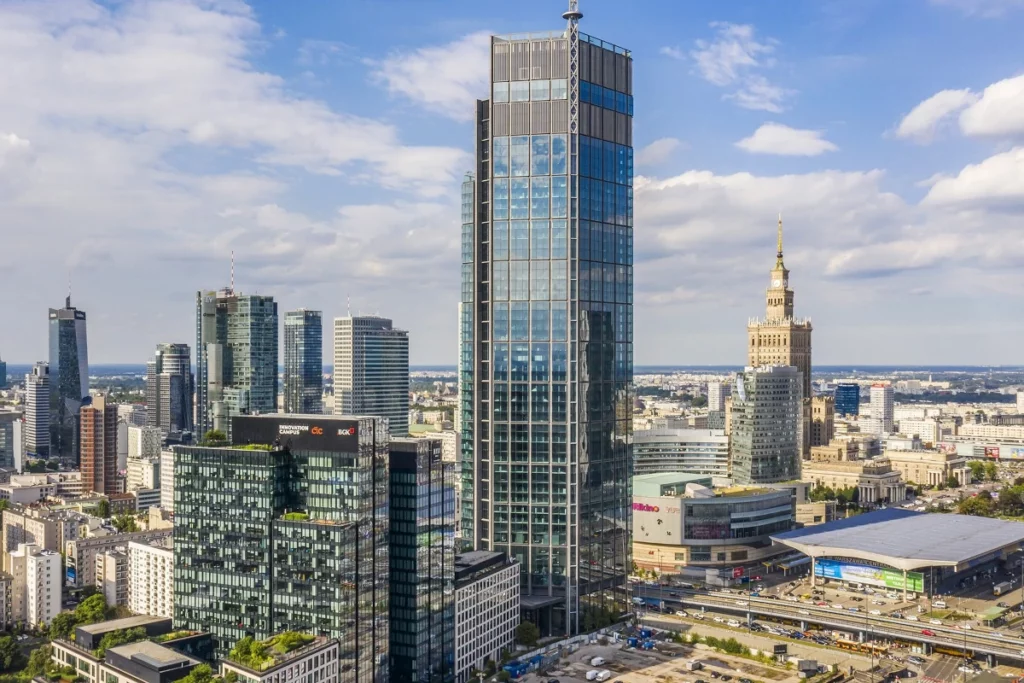
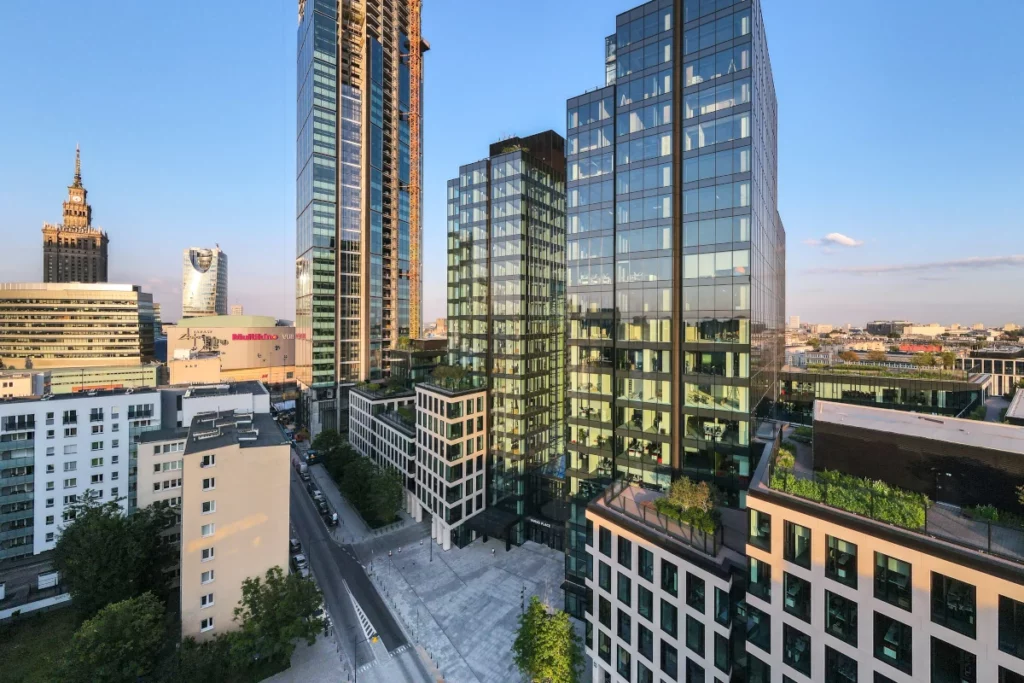
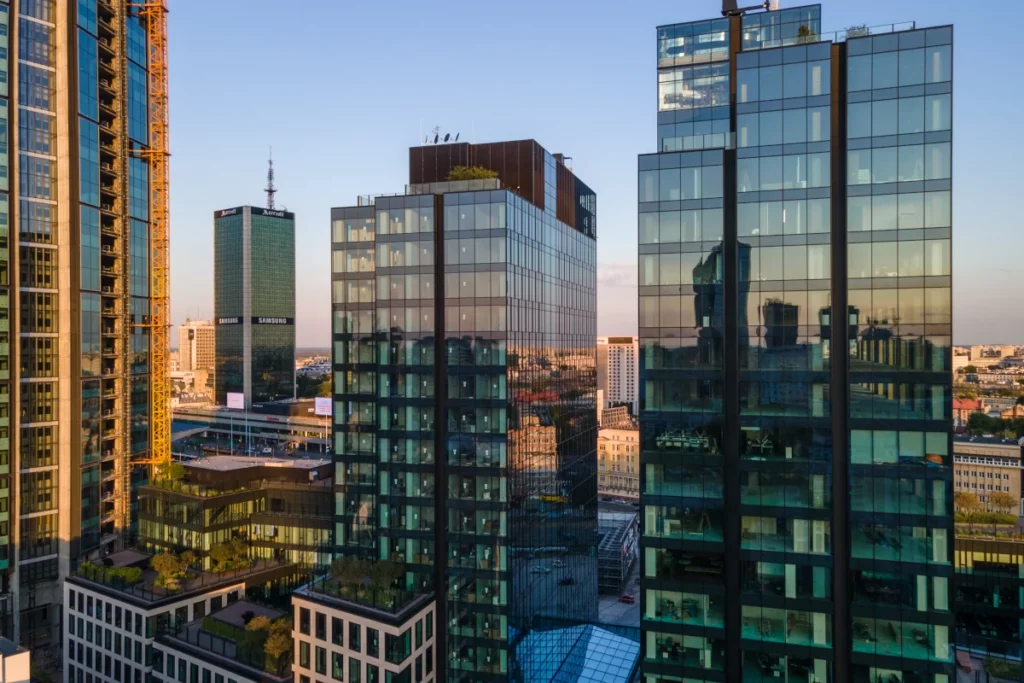
The National Stadium in Warsaw
The National Stadium in Warsaw, also known as the PGE Narodowy, is definitely worth a visit, both for sports enthusiasts and those interested in contemporary architecture. Located on the banks of the Vistula River, the stadium was built for Euro 2012 and has since served as Poland’s main sports stadium.
PGE Narodowy is the venue for many major sporting events, including football matches of the Polish national team, as well as various mass events such as concerts and shows. In addition, inside the stadium there are museums, restaurants, conference rooms and other recreational facilities. It is worth mentioning that the stadium is also one of the most technologically advanced sports facilities in Europe.
Visiting the PGE Narodowy can be an interesting experience during your stay in Warsaw. If you’re planning a visit, it’s worth checking the events calendar on the stadium’s website to see if, by chance, there’s an interesting event or match taking place there. Otherwise, take an interest in exploring the stadium and its surroundings, which can provide interesting experiences and impressions.

Getting around Warsaw
Warsaw is famous for the diversity and convenience of its public transportation. The system includes buses, streetcars and the subway, which together serve more than 240 lines and enable residents and tourists to get around efficiently. The subway, with its two lines, M1 and M2, provides a fast and convenient way to travel between the city’s key districts. Warsaw’s bicycle infrastructure is growing, and the city’s bicycle system, Veturilo, allows for easy and environmentally friendly travel on the streets. There are also numerous scooter rental companies in the city, such as Lime and Bird, which provide an alternative for those seeking flexibility.
There are also traditional cab services in Warsaw, as well as popular apps such as Uber and Bolt, which offer the use of private cars on demand, allowing you to move around the city quickly and conveniently in the comfort of your own vehicle. In Warsaw, we can also rent a car through carsharing services. Companies such as Trafficar and Panek operate here. Prices for renting a scooter, bicycle or car are relatively low. Also, services such as Uber or Bolt are not expensive compared to other European capitals.

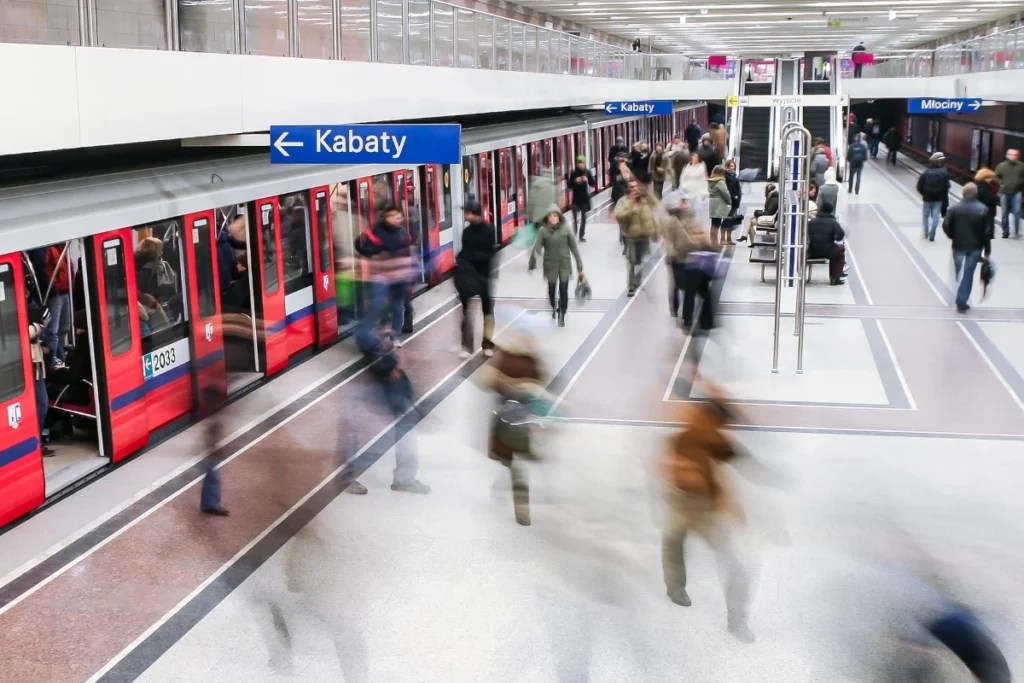
What do foreigners think about Warsaw? How do they rate public transportation in Warsaw? Listen to what James, who is delighted with Warsaw and has visited and lived in many cities in Europe and the World, says.
Entertainment and culture in Warsaw
Warsaw’s cultural life is extremely rich and varied, which makes the city attractive to both residents and tourists. There are many cultural and entertainment events taking place in the Polish capital, covering a variety of arts such as theater, music, dance and visual arts.
There are many theaters in Warsaw, both those with a long tradition and modern stage spaces. Some of these include the Grand Theater – National Opera, the National Theater or the Studio Theater. The city also offers a wide range of music, from philharmonic concerts, to performances by bands and artists from home and abroad, to numerous music festivals.
Art galleries and museums are also an important part of Warsaw’s cultural life. Places such as the National Museum, the Copernicus Science Center, the Warsaw Uprising Museum and the POLIN Museum of the History of Polish Jews are worth a visit. Film festivals, meetings with filmmakers, photography exhibitions and other cultural events are also a common part of life for residents of the capital.
In addition, numerous clubs, bars, cafes, restaurants or concert halls mean that Warsaw offers a wide range of entertainment options for different tastes and preferences. As the city continues to grow, more and more cultural initiatives are added each year, making Warsaw an interesting and inspiring place to live and visit.
Culinary events
Restaurant Week
Restaurant Week is a major restaurant festival held several times a year in Warsaw and other major cities. As part of the event, participating establishments offer guests a special three-course menu at a discounted price. This way, without hurting your wallet, you can try dishes from many restaurants and get to know new, previously unvisited places. A treat for gourmets is a special edition of the festival, dedicated to fine-dining restaurants, offering their guests refined cuisine of high quality service and elegant atmosphere. During this event, restaurants prepare a five-course tasting menu for guests at a very attractive price.
Warsaw Beer Festival
This is the leading event of its kind in Poland. As part of the weekend festival, craft breweries from Poland and abroad present their products. In addition to the opportunity to taste beverages and purchase beers, visitors can attend lectures and tastings commented with experts.
Food on wheels
Regular rallies of food trucks, or mobile diners, are popular. Then, under the open air, you can try dishes and drinks from all over the world: burgers, Asian dumplings, pancakes and desserts in jars, Thai ice cream, Vietnamese sandwiches, etc. The event also features an award ceremony for the best Warsaw street food, selected in a local newspaper competition.
Breakfast fair
Fancy something delicious and surprising? Be sure to go to one of the breakfast fairs on a summer weekend. You’ll find everything you want, including vegetarian dishes, gluten-free and organically grown products. The most popular ones are held in Zoliborz and Mokotow, but you’ll find them in other districts as well.
Night Market
If you’re the kind of person who revives at night and like non-obvious places, Night Market is for you. The old Warsaw Central Station has been given new life thanks to the gatherings of food lovers organized on summer Saturdays and Sundays. Here you will find the best street food in the city and a wealth of flavors – from traditional to oriental.
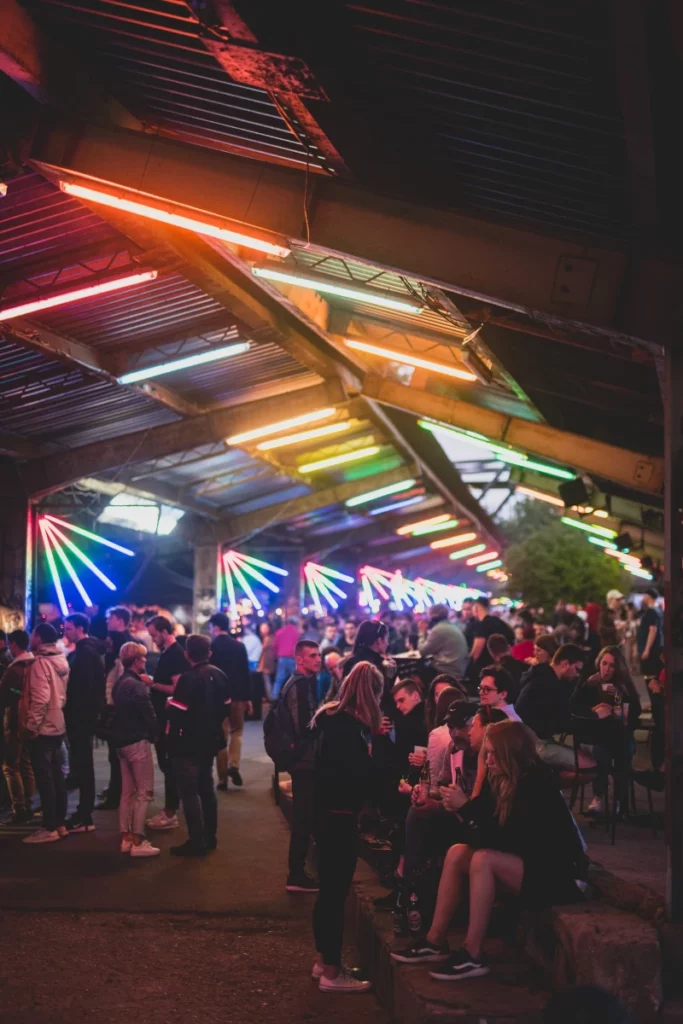
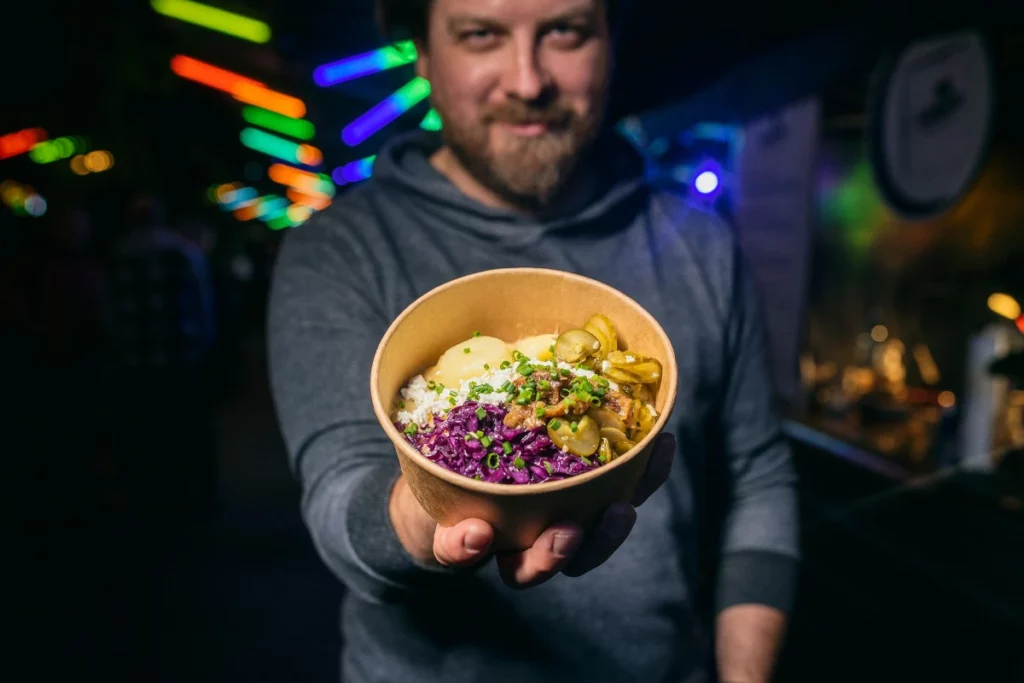
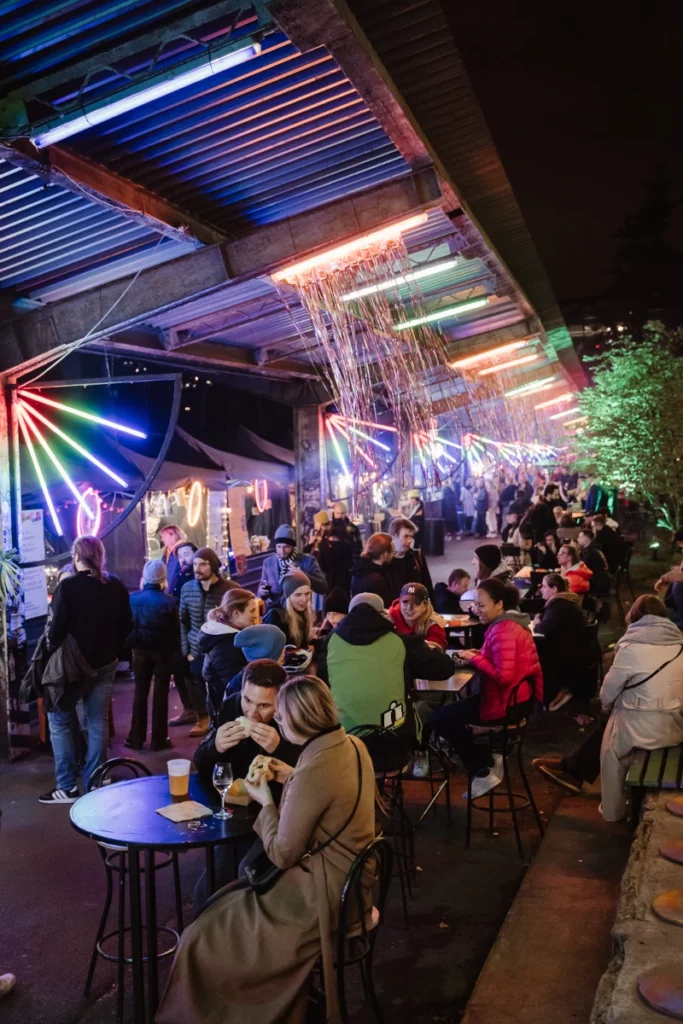


Other interesting places on the map of Warsaw
Koszyki Hall and Norblin Factory
Hala Koszyki and Norblin Factory are two interesting venues in Warsaw that combine history with modernity and play an important role in the cultural and entertainment life of the city.
The Koszyki Hall, located in the center of Warsaw, is a revitalized building of a former market hall from the early 20th century. After extensive renovation and modernization, Hala Koszyki opened in 2016 as a „social center” that offers a unique culinary and cultural experience. Inside, there are a variety of restaurants, bars, cafes, stores with local products and delicatessens, as well as art galleries and space for hosting events. Hala Koszyki has become a popular meeting place for locals and tourists who want to sample a variety of cuisine and enjoy a coffee or drink in a unique, historic atmosphere. see more
The Norblin Factory, located in the Wola district, is in turn a historic industrial complex that played an important role in the Polish metal industry from the mid-19th century until the 1990s. The area has been revitalized in recent years, creating a modern cultural, retail and office center. As a result, the Norblin Factory has become a place where art, design, gastronomy and business intermingle to create a unique experience for visitors. The complex features numerous restaurants, cafes, stores, art galleries, coworking spaces and event venues. see more
Both of these locations are worth visiting during your stay in Warsaw to feel the atmosphere of the city and discover its modern and creative side.
When is the best time to visit Warsaw?
The best time to visit Warsaw depends on your personal preferences and what you want to see and experience during your stay. Here is a brief overview of the different seasons in Warsaw that may help you decide:
Spring (March – May): Spring is a beautiful time to visit Warsaw, when the temperature becomes more pleasant and trees and flowers begin to bloom. During this period you can expect moderate temperatures, which usually range from 10 to 20 degrees Celsius. Spring is also less crowded than the summer period, which can be attractive to those who prefer to avoid large crowds of tourists.
Summer (June – August): Summer is the most popular time of year to visit Warsaw, when the city is bustling with activity and offers many cultural and entertainment events, such as music festivals, exhibitions and picnics. Temperatures in summer can reach as high as 30 degrees Celsius, which is conducive to outdoor sightseeing, lounging in parks or enjoying outdoor cafes. However, it is worth remembering that the summer months are a time when the city can be crowded.

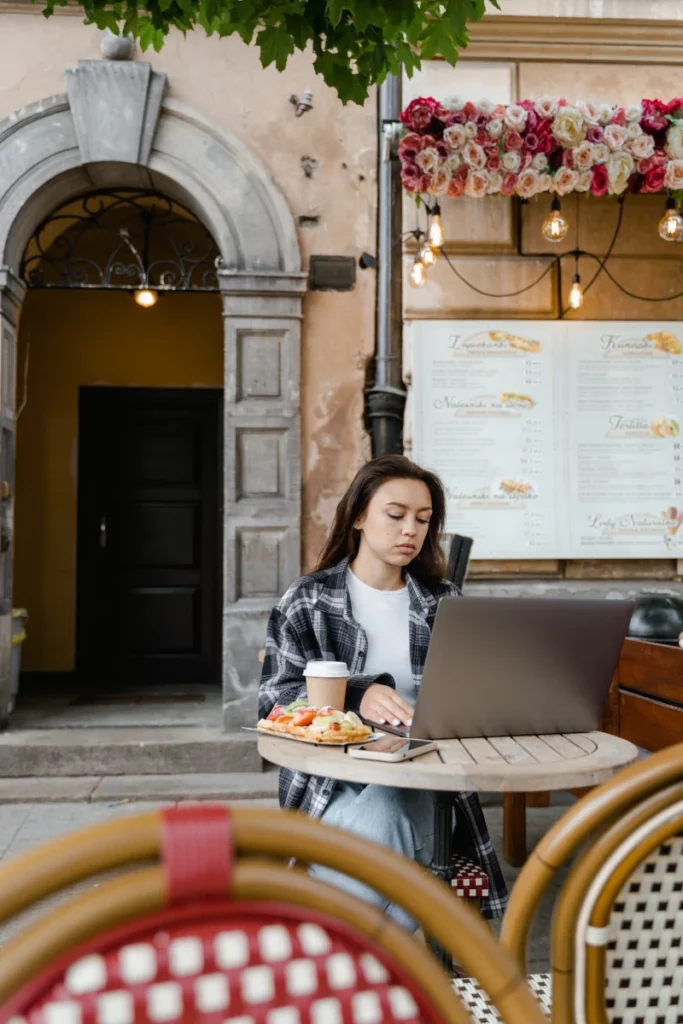
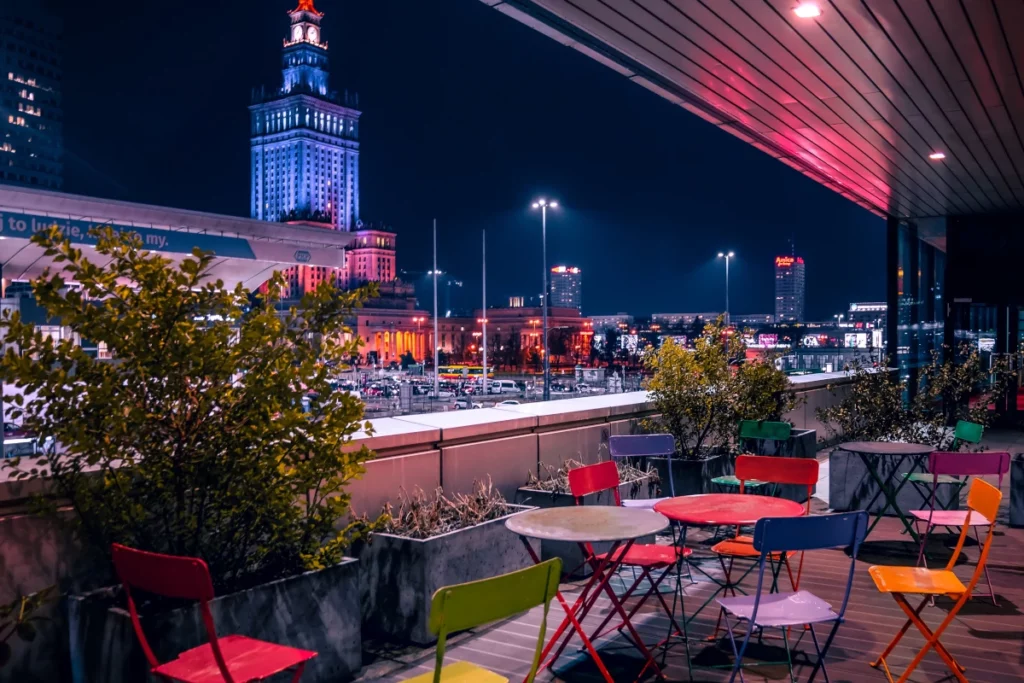
Autumn (September-November): Autumn can be just as beautiful as spring, with the city covered in colorful leaves and moderate temperatures. Many cultural events take place during this period, such as film, theater and music festivals. However, it is worth remembering that towards the end of autumn, temperatures begin to drop and the days become shorter.
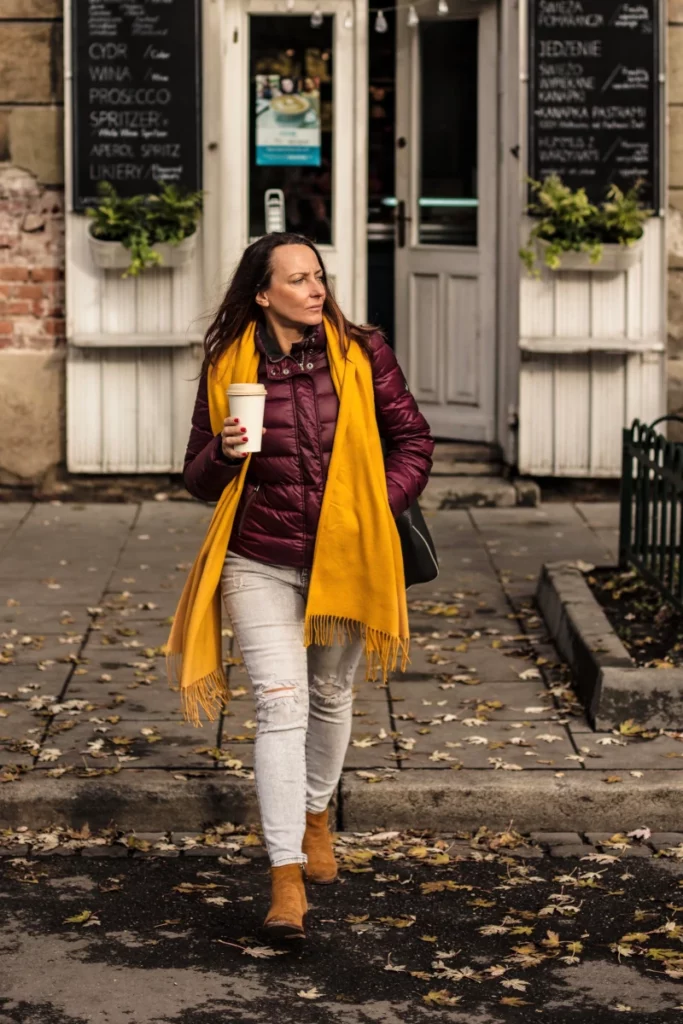
Winter (December-February): Winter in Warsaw can be cold and snowy, with temperatures often dropping below zero. However, the city takes on a special charm during the pre-Christmas period, when Christmas markets are held and the streets and squares are beautifully lit. Winter can also be a good time to visit museums, theaters and other cultural attractions that offer shelter from the cold.
Finally, some more of Warsaw’s diverse architecture
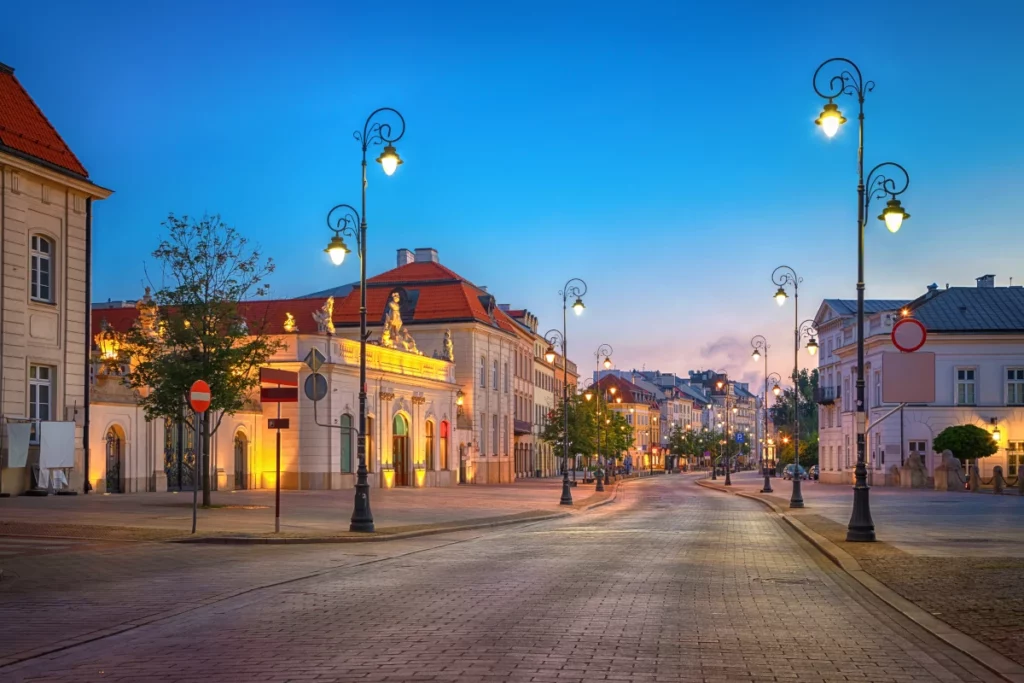
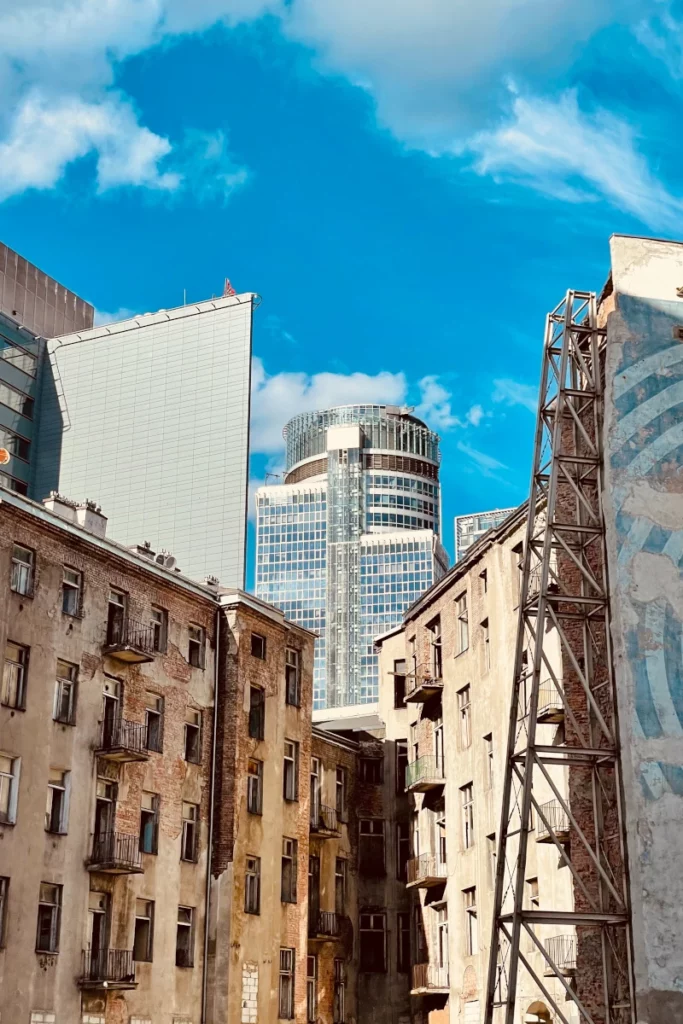

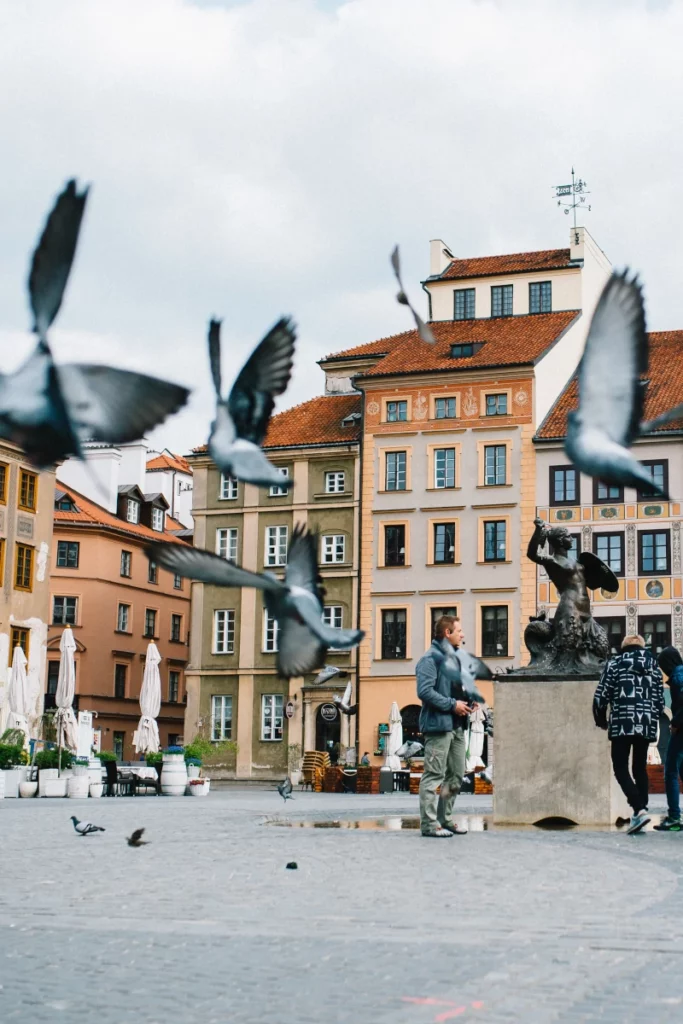
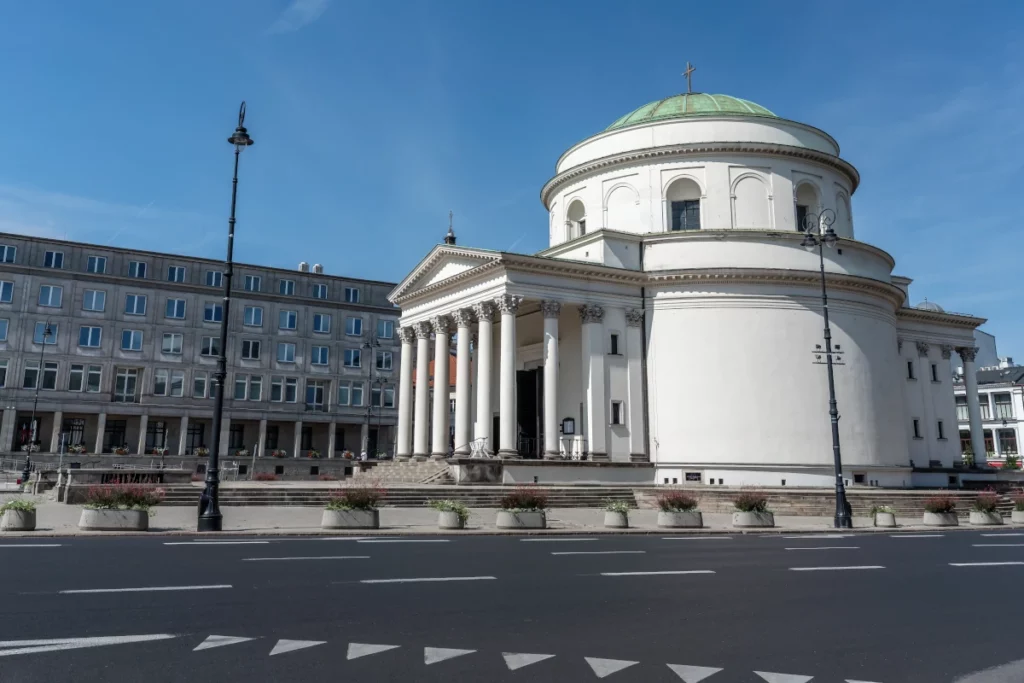
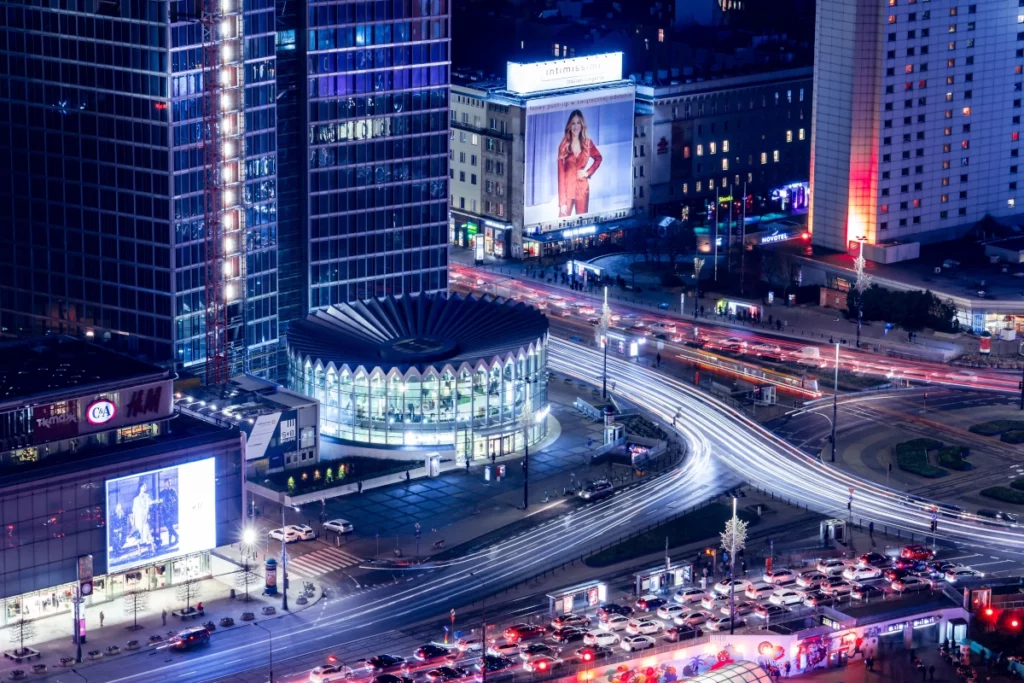
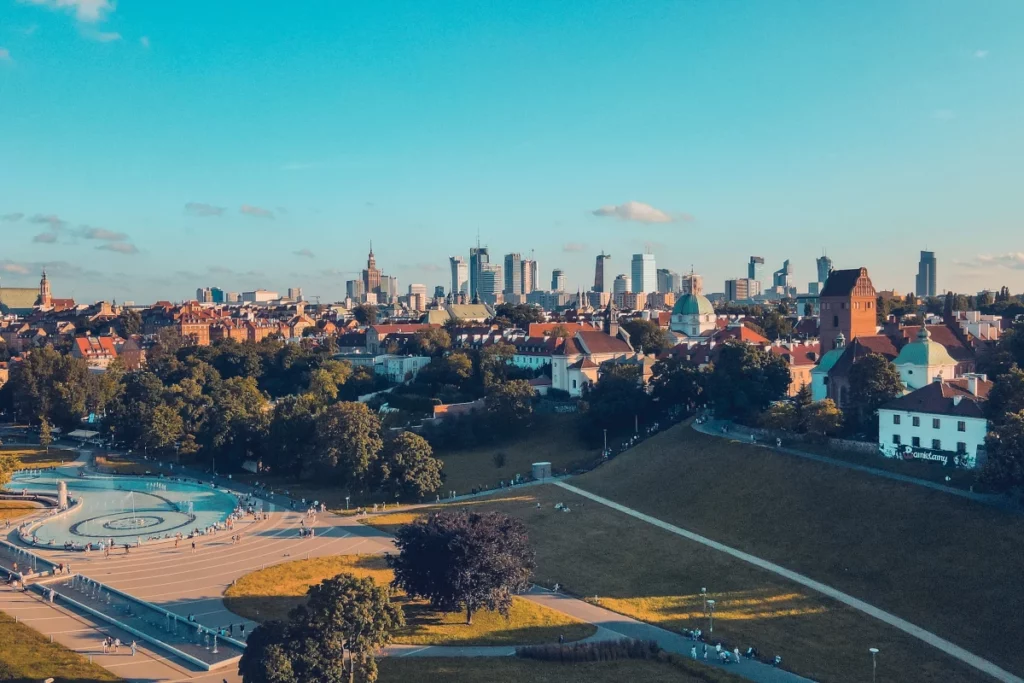
Want to know more about Warsaw and stay up-to-date on current events and attractions? Be sure to visit these places online:

